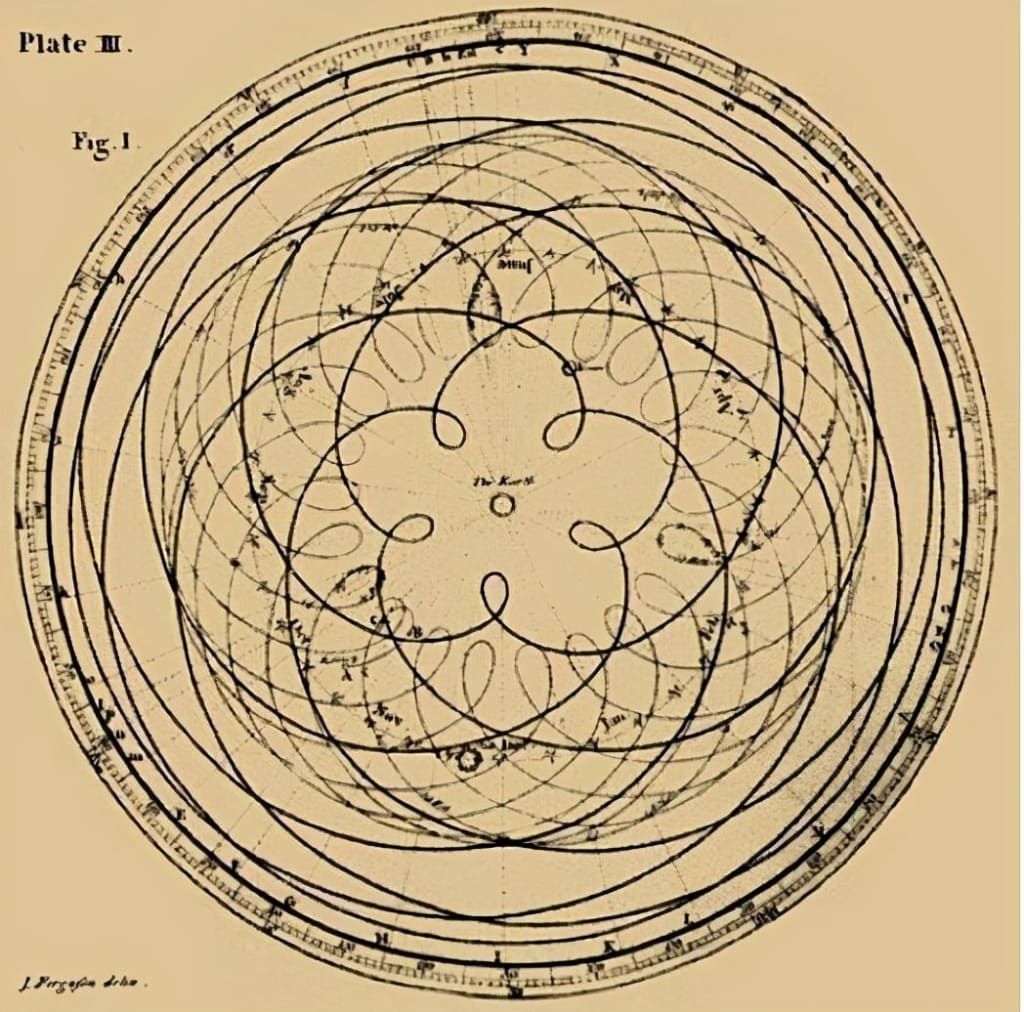
We often say: the more you know, the less you know. The same is true of our understanding of the universe.
In ancient Greece, people believed that the earth was the center of the universe, all the sun, moon and stars revolve around the earth, so ancient Greek sages put forward the "geocentric theory". The early geocentric model still had many problems, but with Ptolemy, geocentric theory gradually matured and became the mainstream theory of the time.
Because it was so intuitive, it became the dominant theory of the day, and even the church agreed with it, so geocentric theory became the dominant scientific theory over the next 1,000 years or so.
Although geocentric theory once became the mainstream theory at that time, it was not unchallengeable. In the Renaissance, Copernicus put forward the "heliocentric theory", which challenged the position of geocentric theory.
But Copernicus's heliocentric theory still had a lot of problems. He just thought that the earth wasn't the center of the universe, but the sun was. However, Copernicus' heliocentric theory fundamentally denied that the Earth was special, and removed humans from their position as masters of the universe.
After the heliocentric theory, scientists never said who should be the center of the universe, because scientists found that the universe is so big that it has a center everywhere, or no center at all.
How big is the universe
We know that the Earth is located in the solar system, in the solar system we are more familiar with the solar system has eight planets, respectively: Venus, Jupiter, Mercury, Mars, Saturn, Earth, Neptune, Uranus.
In 1950, Dutch astronomer J.H. Ort calculated that there were about a trillion comets in the Oort Cloud; And Ginard Kuiper proposed that there is an asteroid belt just outside Neptune's orbit, with about 100,000 objects more than 100 kilometers in diameter.
That means there are trillions of stars in the solar system alone, but most of them are too small for us to see.
The solar system is in the Milky Way, and in the Milky Way there are about 100 billion to 400 billion stars, about 100 billion planets. The diameter of the Milky Way is between 100,000 and 180,000 light years. The solar system is about 26,000 light years away from the center of the Milky Way. It takes about 240 million years to orbit the center of the Milky Way.
If the average person is 100 years old, that means it takes you until your 2.3 billionth generation to reach the center of the Milky Way galaxy. Imagine how big the Milky Way is and how small the Earth is.
This group of galaxies
From our point of view, the Milky Way is big enough that we couldn't fly out of it. But the Milky Way is just one of dozens of other galaxies like it in the Local Group, and the Milky Way is not the largest. Andromeda is far bigger.
Supervirgo cluster of galaxies
The local cluster is large enough, but it is not a member of the superVirgo cluster, and it is not a very big one. Finding Earth in this cluster is like looking for a needle in a haystack.
Observable universe
If e think of the superVirgo galaxy as a tree, then the observable universe might be a forest, and there are many, many more in the observable universe that resemble the SuperVirgo cluster.
However, the observable universe is not the whole universe, but the largest range of the universe that can be observed by human beings using science and technology and the factor of time. What the universe looks like outside the observable universe, even the best scientists do not know, let alone how big the complete universe should be.
Dark matter dark energy
If you think the universe is just as big as we think it is, you might be wrong again. The reason is that only 5% of the universe is made up of observable matter. The other 95% is made up of invisible dark matter and dark energy, which cannot be detected by current instruments because they are not involved in electromagnetic reactions. It turns out that the universe is much bigger and more complex than we thought.
conclusion
If we stand in the whole universe and look at ourselves, we will find that we are as small as single-celled creatures in the sea, a kind of existence that cannot be found in the universe.
What's more, astronomers think that Earth is not special. If life could have arisen on Earth, it must have arisen on other planets in the universe, just because the universe is too big for us to find.





Comments
There are no comments for this story
Be the first to respond and start the conversation.